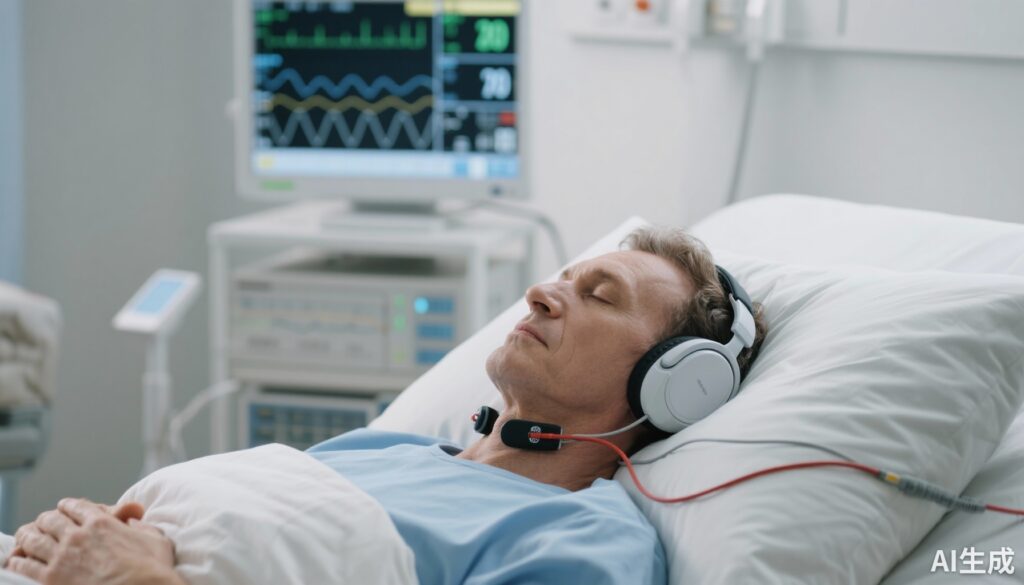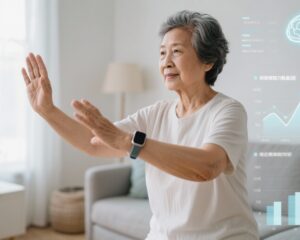Introduction
Insomnia is a common sleep disorder characterized by difficulty initiating or maintaining sleep, or non-restorative sleep, resulting in impaired daytime functioning. Globally, insomnia affects approximately 10-30% of adults, posing substantial public health challenges due to its impact on quality of life, cognitive function, and overall health. Conventional treatments include pharmacotherapy and cognitive behavioral therapy (CBT), yet many patients seek complementary and non-pharmacological interventions due to concerns about medication side effects and accessibility to CBT.
Electrical vestibular stimulation (VeNS) is an emerging neuromodulation technique that delivers low-level electrical currents to the vestibular system, potentially influencing neural circuits involved in sleep regulation. While preliminary studies in Western populations suggest VeNS may improve sleep quality, robust clinical evidence remains limited, particularly within Asian cohorts.
This article reviews a pioneering double-blind, randomized, sham-controlled trial conducted in Hong Kong assessing VeNS efficacy on adults with insomnia, addressing an unmet clinical need for accessible, safe, and non-drug treatment options.
Study Background and Disease Burden
Insomnia significantly burdens individuals and healthcare systems by contributing to diminished quality of life, increased risk for psychiatric and metabolic conditions, and lost productivity. In East Asia, sleep disturbance prevalence is similar or possibly higher than Western countries, yet cultural and healthcare differences may influence treatment availability and patient acceptance.
Non-pharmacological approaches are vital to expanding insomnia care. VeNS targets the vestibular system, which has connections to brain areas governing arousal and autonomic balance, potentially modulating sleep mechanisms without systemic side effects. Prior clinical studies outside Asia have shown mixed results, often limited by small sample sizes or short follow-up durations. This study represents the first rigorous evaluation of VeNS in an Asian adult population with insomnia symptoms.
Study Design
This clinical trial enrolled 101 adults meeting insomnia symptom criteria in Hong Kong, randomized in a 1:1 ratio to either active VeNS or sham stimulation groups. The intervention consisted of twenty 30-minute sessions over four consecutive weeks, administered via a neuromodulation device designed to deliver low-intensity electrical currents targeting the vestibular apparatus.
The trial was double-blind, ensuring neither participants nor assessors knew the treatment allocation, preserving methodological rigor. Outcome measures included validated questionnaires assessing insomnia severity, subjective sleep quality, and quality of life domains.
Assessments occurred at baseline (T1), immediately post-intervention (T2), and at one-month (T3) and three-month (T4) follow-ups, enabling evaluation of both immediate and sustained effects of VeNS.
Key Findings
Of the 101 randomized, 83 participants completed the study with analyzable data (40 active VeNS, 43 sham controls). Statistical analyses demonstrated:
– Significant reduction in insomnia severity scores in the VeNS group compared to sham at T2 (post-intervention), with a moderate effect size (p = 0.03, Cohen’s d = -0.47). This improvement persisted at three months (T4), albeit with a smaller effect size (p = 0.02, d = -0.32), indicating sustained benefit.
– Improvements in health-related quality of life, specifically the role-physical domain, were observed at T2 in the VeNS group, suggesting better daytime physical function.
– Sleep quality measures showed trends favoring VeNS but did not reach statistical significance, warranting further investigation.
– No serious adverse events were reported, affirming VeNS as a safe intervention.
These findings suggest that VeNS can reduce insomnia symptoms and may enhance quality of life in adults with primary insomnia.
Expert Commentary
This trial contributes important evidence supporting VeNS as a non-invasive therapeutic adjunct for insomnia, especially among patients who prefer to avoid medications. The double-blind, sham-controlled design strengthens the validity of results, addressing common placebo and expectation biases.
The vestibular system’s neuroanatomical links to sleep-wake regulatory centers provide biological plausibility for VeNS’s effects. However, mechanisms remain to be fully elucidated—hypotheses include modulation of autonomic nervous system balance, reduction of cortical excitability, or influence on circadian rhythms.
Limitations include the moderate sample size, attrition reducing analyzed participants, and reliance on subjective rather than objective polysomnographic data. Additionally, the study population being Hong Kong-based may limit generalizability to other ethnic or clinical groups.
Future work should replicate findings in larger, multisite trials, incorporate objective sleep measurements, and explore dose-response relationships and long-term safety.
Conclusion
This first-of-its-kind Asian randomized controlled trial demonstrates that electrical vestibular stimulation is a promising, safe, and effective adjunctive therapy for adults with insomnia, producing significant reductions in insomnia severity and improvements in physical role function. The sustained benefits at three months post-treatment underscore VeNS’s potential for lasting impact.
Given the burden of insomnia and the limitations of current treatments, VeNS offers a novel, non-pharmacological approach warranting further research. Clinicians may consider VeNS as part of a multimodal insomnia management plan in appropriate patients, mindful of individual preferences and clinical context.
Ongoing studies should clarify mechanisms of action and optimize treatment protocols to maximize patient outcomes.
References
Cheung T, Lam JYT, Fong KH, Cheng CP, Xiang YT, Li TMH. Efficacy of electrical vestibular stimulation (VeNS) on adults with insomnia: A double-blind, randomized, sham-controlled trial. Dialogues Clin Neurosci. 2025 Dec;27(1):236-248. doi: 10.1080/19585969.2025.2526547. Epub 2025 Jul 11. PMID: 40650353; PMCID: PMC12258234.
Espie CA. Insomnia: Conceptual Issues in the Development, Persistence, and Treatment of Sleep Disorder in Adults. Annu Rev Psychol. 2002;53:215-243.
Aricò D, Rinaldi B, Sechi R, et al. Neuromodulation for Sleep Disorders: An Overview. Sleep Med Rev. 2020;53:101338.
Rosenberg RP. Sleep Maintenance Insomnia: Strengths and Limitations of Current Pharmacologic Therapies. Sleep Med. 2006;7 Suppl 1:S26-32.



